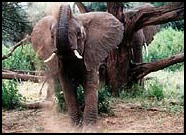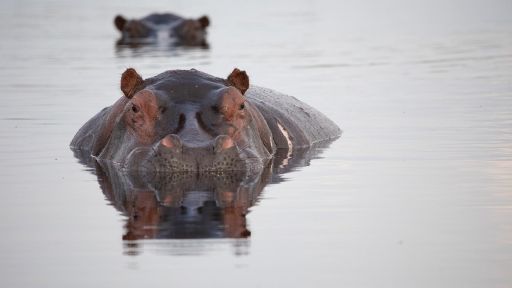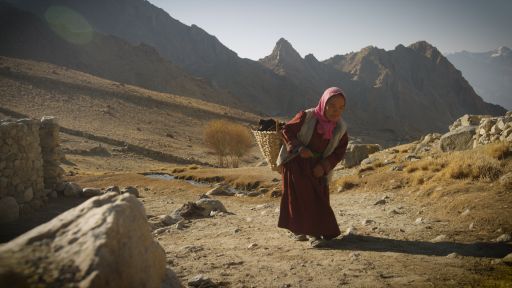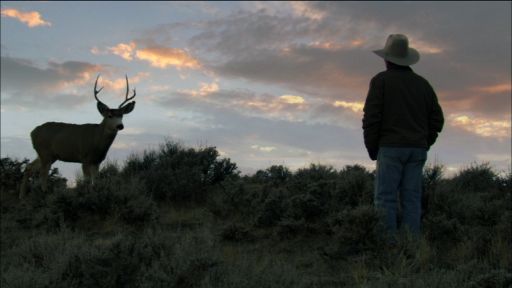The trunk also acts as a hose, whether for a drink or a dust bath. (A coating of dust, like mud, repels sun and insects). To drink, an elephant sucks water into its trunk, pokes the open end in its mouth, and releases the water to let it drain down its gullet.
During the dry season, when water is low, an elephant will dig holes to find underground springs, drawing as much as two gallons at a time with its trunk. The water holes also give elephants access to important mineral sources buried deep below the surface.
While these open wells provide a water source for thirsty elephants, other wildlife also depend on them for survival. After elephants leave an area, smaller creatures rush to the watering holes dug by the elephants. Throughout their daily lives, elephants are the landscape architects essential for creating worn paths through the thick forests, excavating trees in the open savannahs, and unearthing water wherever it is needed.
Plucking fruit from trees with their flexible trunks, elephants feed themselves — and help forests regenerate. After having walked many miles, the elephants excrete the seeds of the fruit, which sprout in fertile dung piles and create new trees in other parts of the forest. Recent studies have shown that 90 different tree species depend on hungry elephants in order to prosper. Without elephants, Africa would look vastly different.
Photo: Diane C. Ross.








